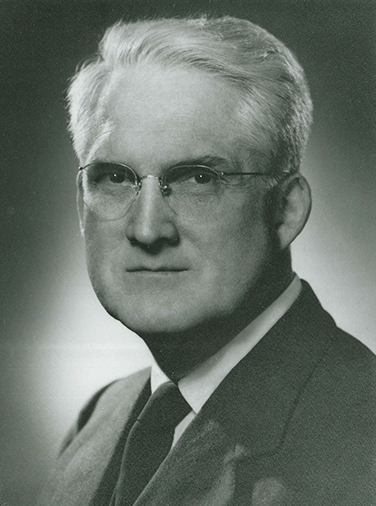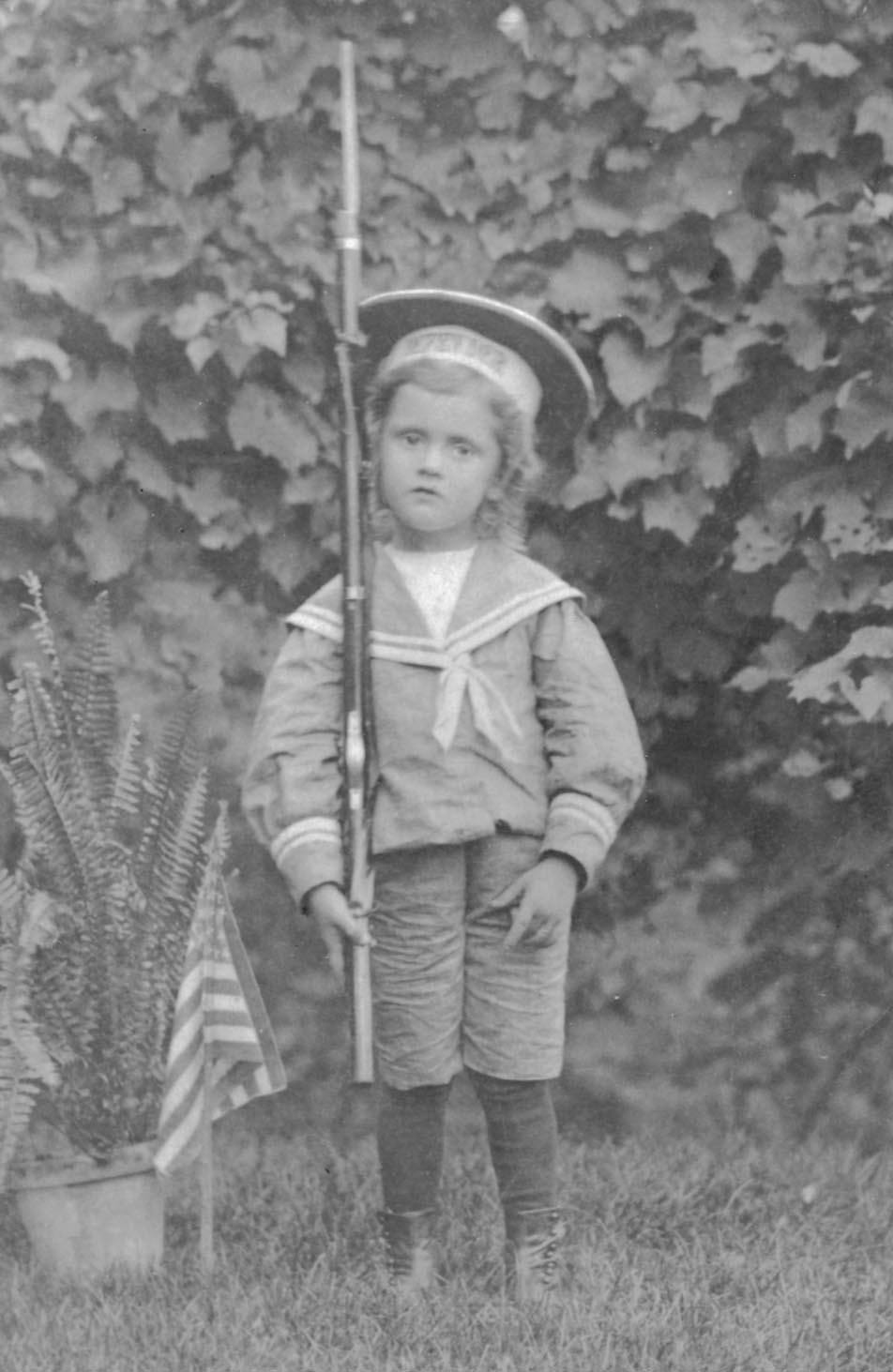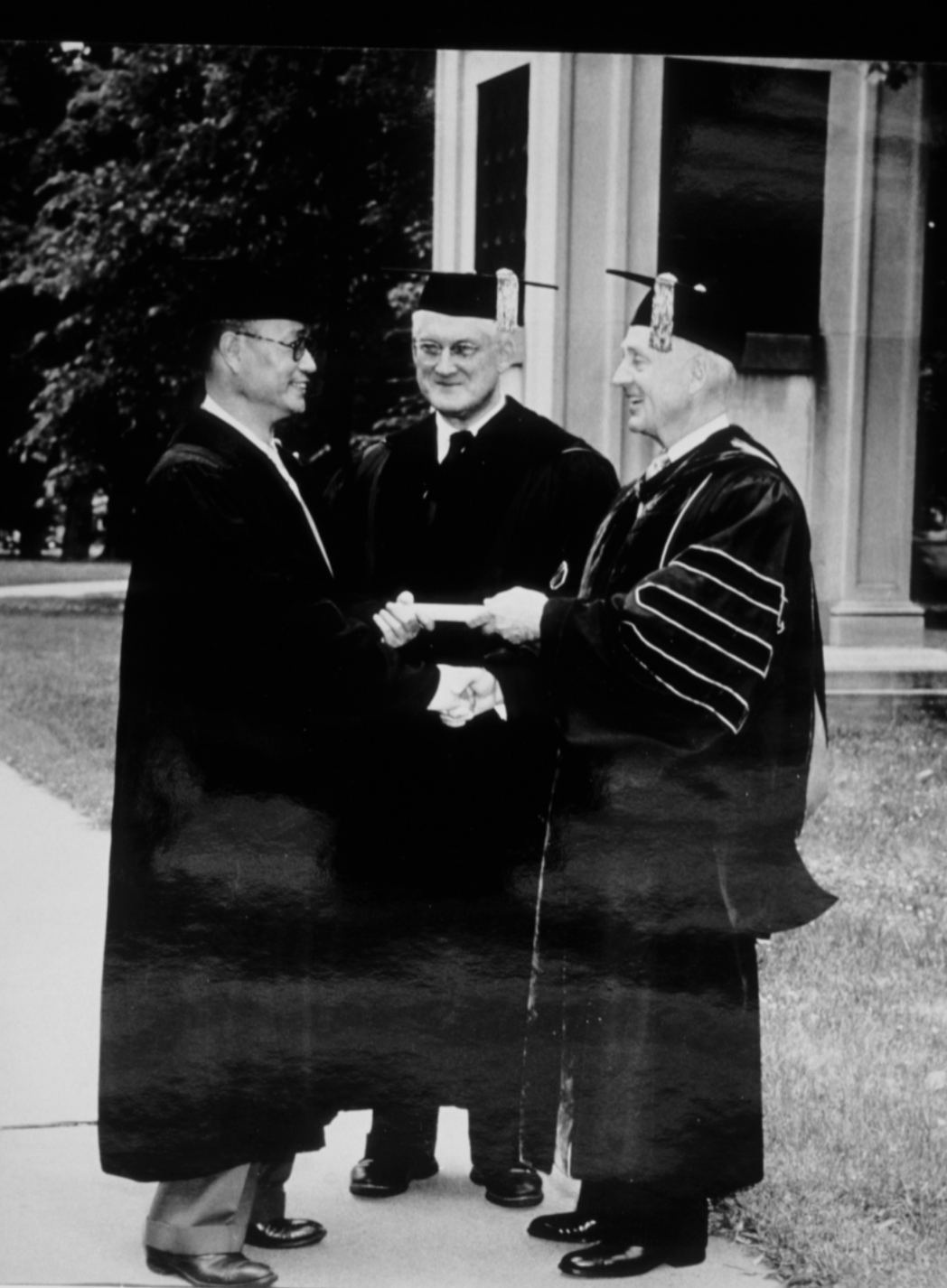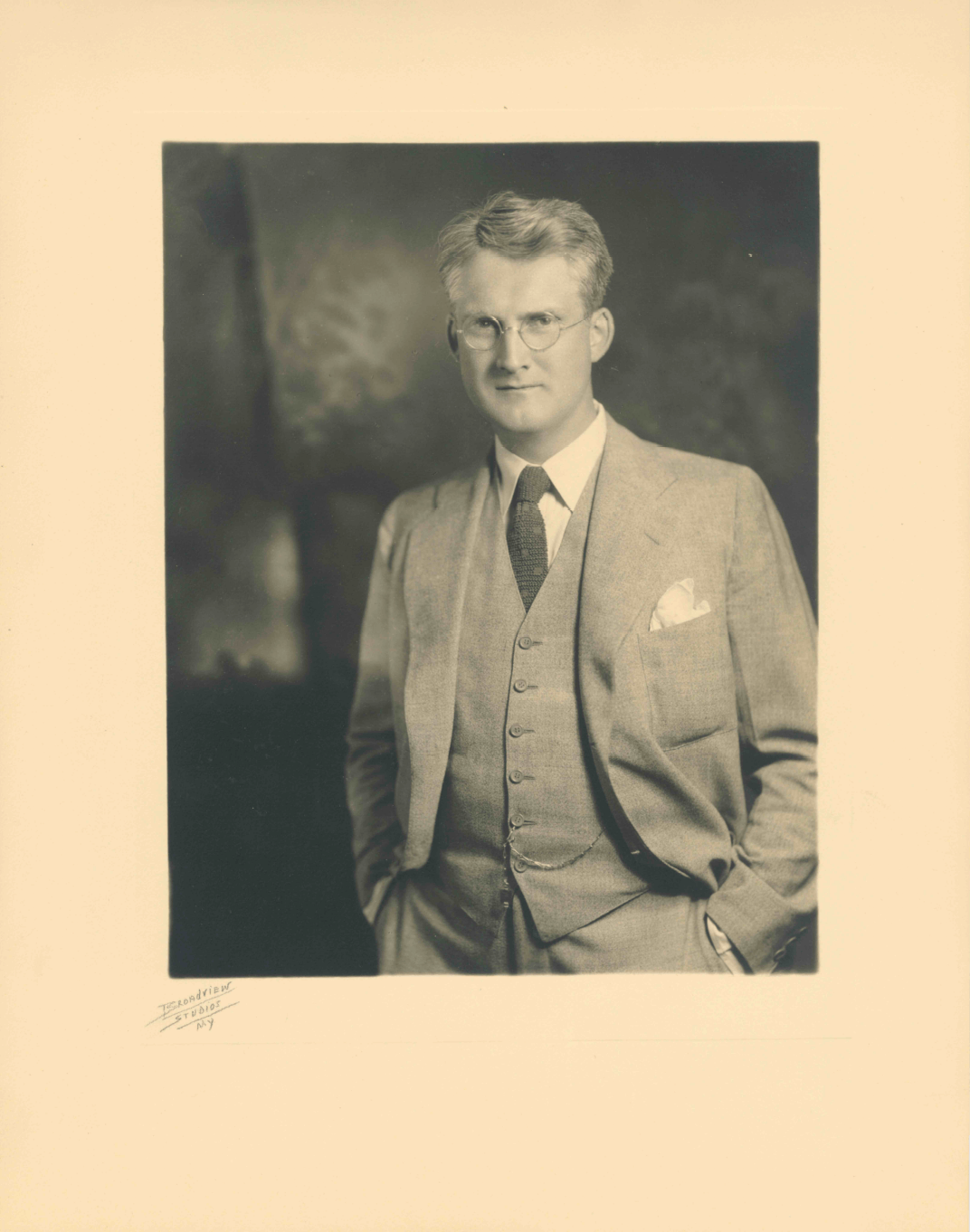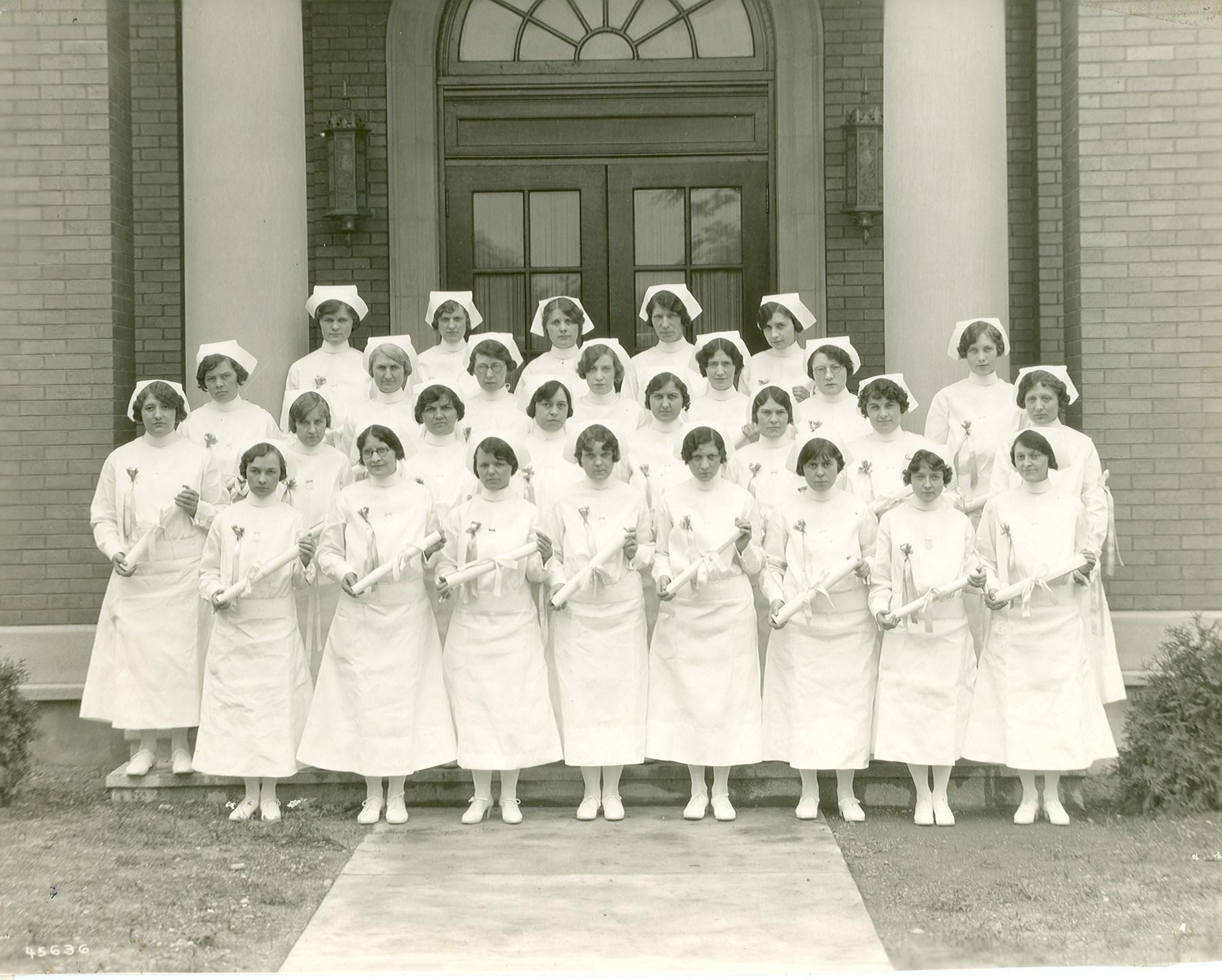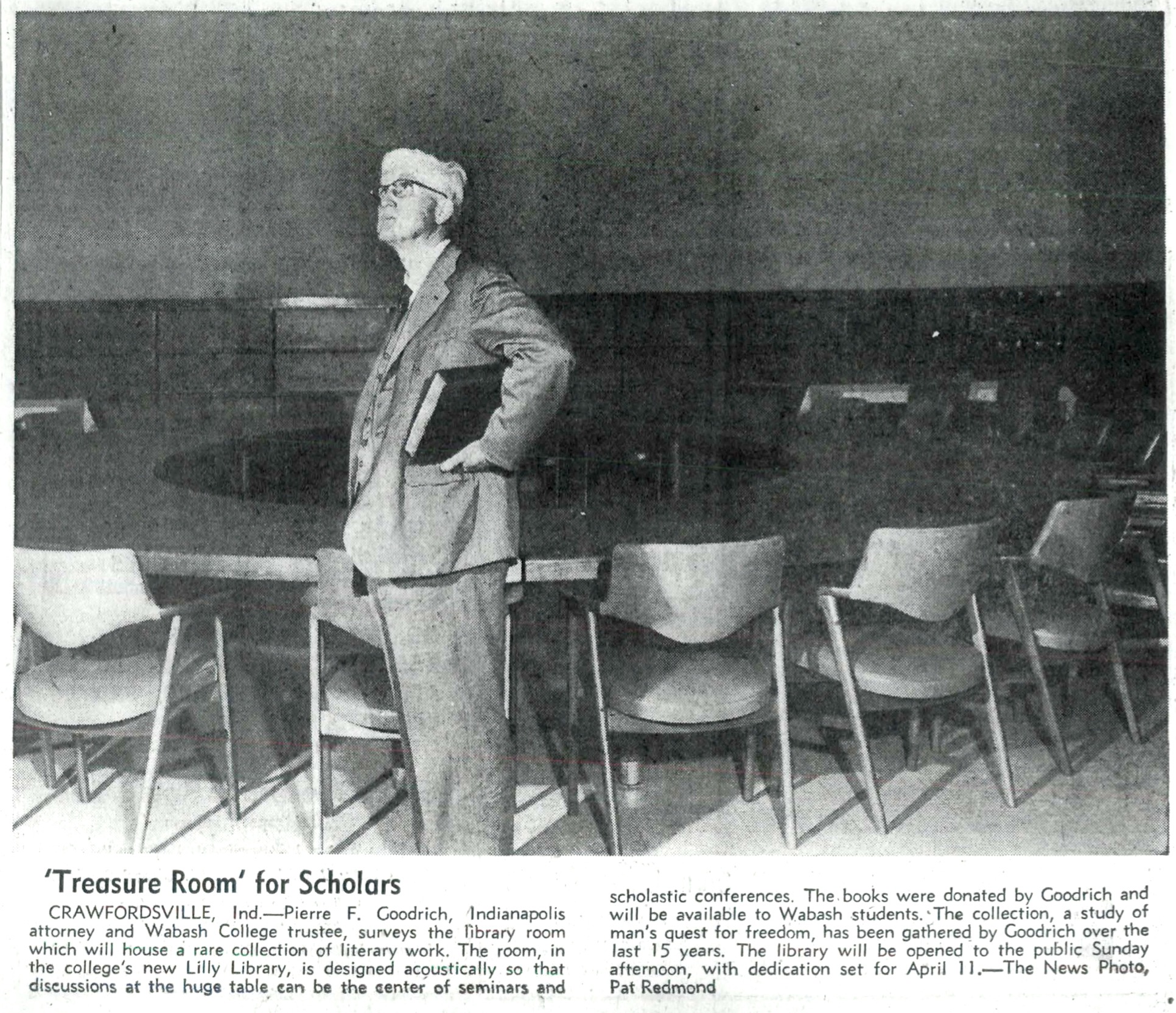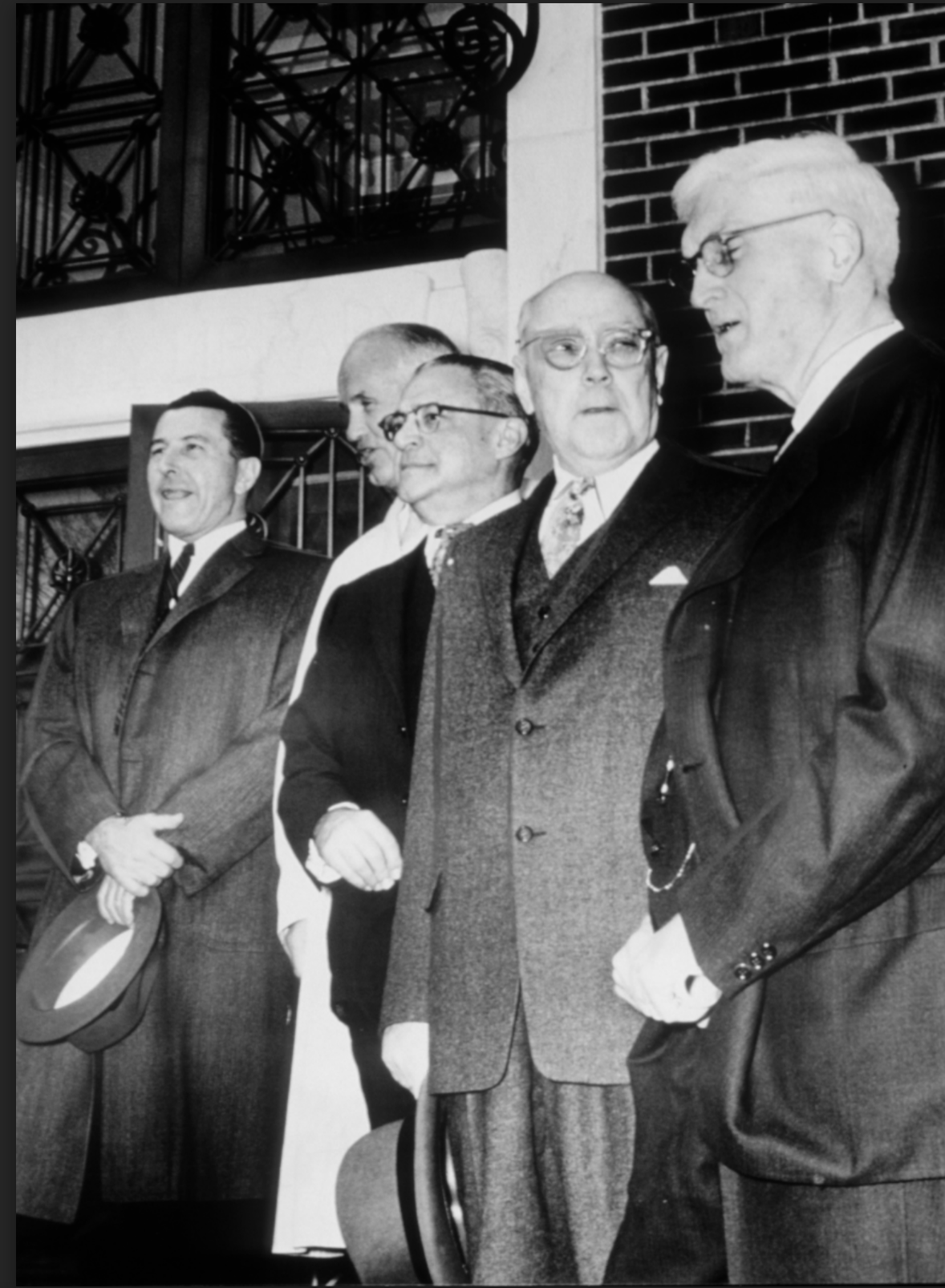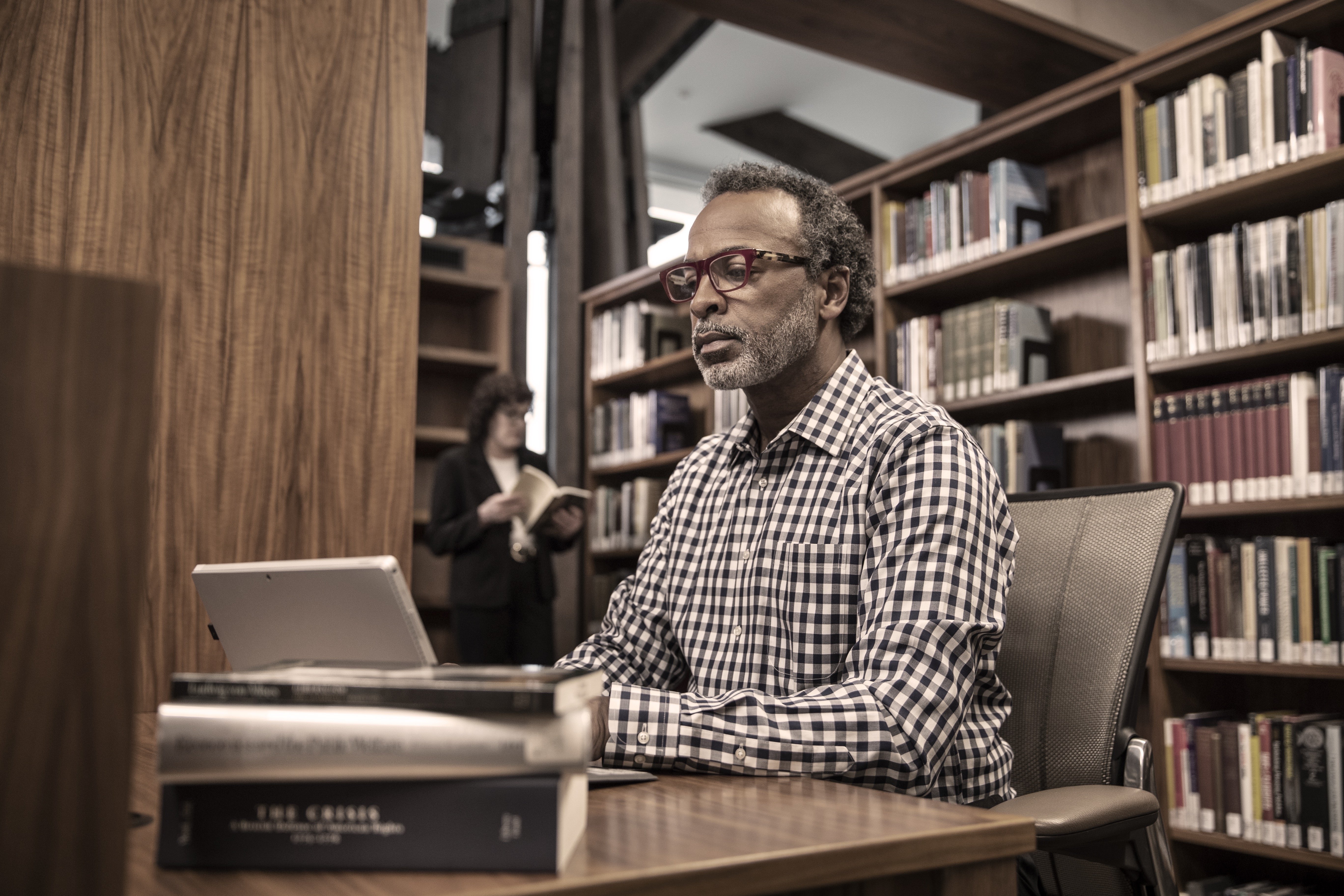Pierre F. Goodrich, an Indianapolis businessman and lawyer, founded Liberty Fund in 1960. Upon his death in 1973, Mr. Goodrich left a portion of his estate to the Foundation for the purpose of exploring the many dimensions of liberty.
Mr. Goodrich, a man of extensive intellectual interests, reflected deeply upon the human condition. He read widely in the Great Books of both the Western and Eastern traditions.
Mr. Goodrich observed that human beings are far from perfect and have only a partial understanding of their own nature. Institutions, in turn, are fraught with imperfections. He was particularly concerned that intellectual hubris leads to pretensions of certainty about the nature of the world and to preposterous and dangerous “solutions.” This abuse of reason leads to restrictive institutional arrangements that concentrate political and economic power. Such concentrations invariably erode liberty and moral values.
The responsible course of action in an imperfect world, Mr. Goodrich believed, consists of making choices that favor liberty from among the imperfect options available. A commitment to liberty in all its dimensions offers the best chance to fragment and decentralize power and to release individual, creative initiative. A free society can maintain and enhance individual liberty and excellence, a genuine concern for others, a framework for social order, and economic well-being.
Mr. Goodrich believed that education in a free society requires a dialogue centered around the great ideas of civilization. He saw learning as an ongoing process of discovery, not limited to traditional institutional settings or specific ages. Education is, in his view, the lifelong responsibility of each individual. Liberty Fund carries out this conviction by promoting the ideal of a society of free and responsible individuals through full and open discussion.

